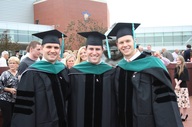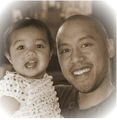- Home
- About Us
- TSPT Academy
- Online Courses
-
Resources
- Newsletter
- Business Minded Sports Physio Podcast
- Day in the Life of a Sports PT
- Residency Corner
-
Special Tests
>
-
Cervical Spine
>
- Alar Ligament Test
- Bakody's Sign
- Cervical Distraction Test
- Cervical Rotation Lateral Flexion Test
- Craniocervical Flexion Test (CCFT)
- Deep Neck Flexor Endurance Test
- Posterior-Anterior Segmental Mobility
- Segmental Mobility
- Sharp-Purser Test
- Spurling's Maneuver
- Transverse Ligament Test
- ULNT - Median
- ULNT - Radial
- ULNT - Ulnar
- Vertebral Artery Test
- Thoracic Spine >
-
Lumbar Spine/Sacroiliac Joint
>
- Active Sit-Up Test
- Alternate Gillet Test
- Crossed Straight Leg Raise Test
- Extensor Endurance Test
- FABER Test
- Fortin's Sign
- Gaenslen Test
- Gillet Test
- Gower's Sign
- Lumbar Quadrant Test
- POSH Test
- Posteroanterior Mobility
- Prone Knee Bend Test
- Prone Instability Test
- Resisted Abduction Test
- Sacral Clearing Test
- Seated Forward Flexion Test
- SIJ Compression/Distraction Test
- Slump Test
- Sphinx Test
- Spine Rotators & Multifidus Test
- Squish Test
- Standing Forward Flexion Test
- Straight Leg Raise Test
- Supine to Long Sit Test
-
Shoulder
>
- Active Compression Test
- Anterior Apprehension
- Biceps Load Test II
- Drop Arm Sign
- External Rotation Lag Sign
- Hawkins-Kennedy Impingement Sign
- Horizontal Adduction Test
- Internal Rotation Lag Sign
- Jobe Test
- Ludington's Test
- Neer Test
- Painful Arc Sign
- Pronated Load Test
- Resisted Supination External Rotation Test
- Speed's Test
- Posterior Apprehension
- Sulcus Sign
- Thoracic Outlet Tests >
- Yergason's Test
- Elbow >
- Wrist/Hand >
- Hip >
- Knee >
- Foot/Ankle >
-
Cervical Spine
>
- I want Financial Freedom
- I want Professional Growth
- I want Clinical Mastery
 Knowing what path to take following graduation can be very difficult. If you are like us, you have many unanswered questions: What continuing education courses should I take? How can I maximize my success with patients? What common professional mistakes can I avoid making and how? We recently reached out to some of the top professionals to find out what steps they took to become successful. The answers below are brought to you by Dr. E (The Manual Therapist). 1. What advice do you have for physical therapists in their first years of professional practice? My advice is to get a system of assessment and treatment. Most schools still teach the tired and not so true history, AROM, PROM, palpation, special tests up the wazoo, come up with a diagnosis, and now what? I know we have to learn basics in school, but this ends up leaving most novice clinicians with too much info! Any clinician needs a system of assessment which leads to treatment. Classification has been shown in the research to improve outcomes versus treatment of patho-anatomical models. This leads me to my next answer! 2. What is one continuing education course you would recommend every physical therapist attend? Please provide a brief explanation. Years ago, I would have told any new grad to take a series of manual therapy courses like Paris, Maitland, Grimsby, NAOIMPT, etc... While these courses will enhance your clinical decision making eventually, you will be overwhelmed with options. Your first day back with live patients, you will be left with dozens of ways to passively assess movement and often hundreds of new treatment techniques. Is complex better? Often not... it's also less reliable. That is why I tell all my students to take McKenzie Courses A-D. Certification is not necessary, but helps solidify your knowledge by getting you to really study the system and then have your knowledge practically and didactically tested. It's one of the most proven methods of assessment for reliability, and has been shown to have superior long term outcomes versus traditional OMPT in the lumbar spine. 3. What are some important components a new graduate should look for in their search for a first job? If possible, you should look for freedom to assess and treat, plus quality time with your patients. I realize beggars cannot be choosers and I worked two jobs for the first two years of my career seeing 4-6 patients an hour and having 30 minutes for evals. Do not be discouraged or complacent. I have seen too many students settle on clinics that see way too many people and cannot possibly provide quality care. The clinics that do provide 1:1 are out there, and sometimes you have to form your own. I did not think that was possible 7-8 years ago, but decided to take a risk 10 years in and finally have a practice of my own. Your future employer should be open to how you want to evaluate and treat, not dictate pathways per diagnosis. A recent fellow mentee finished his hours, graduated from the program only to be employed by someone who wanted everyone to get a "fru-fru" type of massage and have the patients dictate the Tx a la carte, not the clinician. She took also took away IASTM and spinal manipulation even though on the interview, she said these treatments would be fine. Lastly, you want to have an employer that pays for a decent amount of con-ed. One to two courses per year are enough to keep up with your learning. 4. What is one thing you would have done differently early in your career? And why? I wish I would've learned to be lighter with my hands a long time ago. Telling patients to suck it up, and I have to plastically deform their fascia and joint capsules left a lot of people sore and occasionally bruised. That's not cool. If going lighter and lighter all the time with my forces and getting patients better faster is not an indication that interaction, education, and then manual therapy are the way to go, I don't know what is! 5. Any other words of advice for the new graduate? Yes, you're always a student! Keep up with the learning, the more you learn the less you know and that is how it should be! As a know it all, I thought after taking Paris' courses that I was a bullet proof clinician. Yet, somehow 12 years ago, it was taking me 15-20 visits to make patients better. There are so many resources available to you online from twitter to facebook and of course blogs! You are practicing in a very exciting time! I find myself changing assessment, treatment, educational and interaction models with patients every 2 years or so. If you haven't had a paradigm shift in 2-3 years, you're not learning enough! One last piece of advice. I thrive as a mentor. Feel free to post in the forum or contact me via the link in the sidebar. I try to get back to everyone within one business day! Good luck out there!  About Dr. E: Dr. Erson Religioso III, DPT, MS, MTC, CertMDT, CFC, CSCS, FMS, FMT, FAAOMPT, graduated from D'Youville College in 1998 with a dual Bachelor's of Science and Master's of Science in Physical Therapy. His interests in Orthopaedics and Manual Therapy lead him to pursue a Doctor of Physical Therapy degree from the University of St. Augustine. Studying under StanleyParis, Ph.D, PT, internationally known for his manual skills and knowledge of the spine as well as his distinguished faculty, Dr.Religioso earned his DPT and Manual Therapy Certification in 2000. He later became credentialed in Mechanical Diagnosis and Treatment of the Spine in 2000, and in 2008 became one of four mentors in the country who can train orthopaedic manual therapy to MDT Diplomats, of which there are only several hundred in the world. Thanks to extensive training and certification from Dr. Mariano Rocabado, PT, of Chile, one of the world’s foremost experts in treatment of temporomandibular joint dysfunction, Dr. Religioso became certified in evaluation and treatment of oromaxillary, craniofacial, and temporomandibular pain in 2005. Later in 2005, he obtained Fellow status in the American Academy of Orthopaedic Manual Physical Therapists and serves as a mentor for future Fellows through Daemen College’s Fellowship in OMPT program. He recently became certified in FMS level 1 in December 2011 and expects certification in level 1 of the Selective Functional Movement Assessment soon. In January 2013, Dr. Religioso became an official FMT level 2 certified Rock Doc, a start of the art method of kinesiotaping. In mid to late 2013, Dr. Religioso is pursuing courses leading to the completion of the Postural Restoration Institute's PRC Certification. Dr. Religioso is adjunct faculty of D’Youville College, Daemen College, and SUNY at Buffalo, where he teaches orthopaedic manual physical therapy in the DPT programs. He founded themanualtherapist.com to help mentor and teach professionals around the world and physioanswers.com to help educate consumers and the general public on the profession of physical/physiotherapy. He also is the creator of the EDGE Tool, a high quality stainless steel tool for assisted soft tissue manipulation, the EDGEility Tool, a lower cost, high quality plastic tool for IASTM, the CupEDGE, silicone cups for cupping massage and assisted tissue manipulation, the EDGE Mobility Bands, for enhancing mobility with compression wrapping and self mobilization from neck to foot, and the Stop Thought Viruses Challenge, for individuals in chronic/persistent pain states. He also is an importer of high quality Mirror Boxes for pain, arthritis, stroke rehab, and neuroorthopaedic problems. In 2013, courses in the continental US, Canada, and Chile will be available on the Eclectic Approach to TMD and Facial Pain, Neurodynamics, Soft Tissue Manipulation feat. the EDGE, Spinal Thrust Manipulation, and Assessment and Treatment of the Upper and Lower Quarter (2 separate courses).
3 Comments
Dad n Mom
7/16/2013 11:57:43 pm
Wow Ers an excellent article. We are very proud of you. No wonder you are in demand for your expertise to give lectures in your chosen field. Well written advice. Keep it up.
Reply
Sayali
8/2/2013 04:40:50 pm
Really inspiring !
Reply
6/16/2023 04:08:09 pm
Just finished reading your article on apa research paper format "5 Pieces of Advice for New Graduates" and I couldn't resist leaving a comment. First of all, let me start by saying that your insights are absolutely spot-on and incredibly valuable for those of us who are just starting out in the field of physical therapy. As a recent graduate myself, I found your article to be both informative and inspiring.
Reply
Leave a Reply. |
Dr. Brian Schwabe's NEW Book in partner with PaleoHacks!
Learn residency-level content on our
Insider Access pages We value quality PT education & CEU's. Click the MedBridge logo below for TSPT savings!Archives
July 2019
Categories
All
|






 RSS Feed
RSS Feed